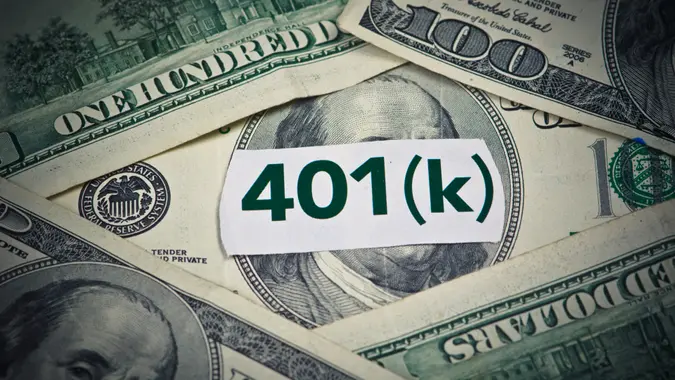Retirement Checklist: 7 Things Retirees Need To Double-Check Before 2025

Commitment to Our Readers
GOBankingRates' editorial team is committed to bringing you unbiased reviews and information. We use data-driven methodologies to evaluate financial products and services - our reviews and ratings are not influenced by advertisers. You can read more about our editorial guidelines and our products and services review methodology.

20 Years
Helping You Live Richer

Reviewed
by Experts

Trusted by
Millions of Readers
Are you currently retired? While you may have already done the hard part of saving and planning your retirement, there are some things you should double-check every year to maintain your portfolio and keep your retirement plan on track.
Here are a few items you should probably look at before the end of the year.
Check How Much of Your Portfolio You’re Spending
If you set an annual spending limit when planning your retirement, the end of the year is a good time to look back and check whether you’re keeping your spending within those bounds. What percentage of your portfolio did you spend this year? See if this lines up with the plan you made before you retired.
You may need to adjust your spending allowance if your portfolio has drastically changed in value. If your investments have done well, you might be able to afford to spend a bit more. If your returns have been lower than expected, or negative, you might need to cut back to preserve your capital.
Checking your spending rate, and adjusting it as needed, each year can help you make sure your savings will last.
Make Sure You’ve Taken Your Required Minimum Distributions
Once you’re 73 or older, you may have to withdraw a certain amount from your retirement accounts each year. If you have an individual retirement account or a 401(k), this probably applies to you. The exact amount, called the required minimum distribution (RMD), is calculated based on your portfolio’s balance and current life expectancy statistics.
If you fail to take the correct RMD, the amount you failed to withdraw may then be subject to a 50% excise tax. This can be a hefty blow to your portfolio, so make sure you don’t forget or miss the deadline.
Check How Your Portfolio Is Currently Allocated
When you were putting money into your retirement portfolio, you may have had some sort of split in mind for different investments. For example, you may have wanted to keep 10% of your money in cash accounts, 40% in stocks and 50% in bonds.
Over time, this percentage may have shifted. Since stocks can be more volatile than bonds or cash, they may have gone up or down in value compared to the rest of your portfolio. If you find that your stocks have gone up in value and that a higher percentage of your current portfolio is in stocks, it might be a good idea to cash out some of that money and reallocate it.
Sometimes, as retirees get older, they rebalance their portfolios to lower their risk. See if the way your portfolio is allocated right now fits your current risk tolerance. If not, you can move some of your money from riskier assets into bonds or cash.
Make Sure Your Spending Money Is Liquid
If all of your money is still in investments, then you’ll have to sell some of those investments whenever you need to pay for something. If there’s a temporary market dip and your portfolio loses value, you’ll still have to sell some of your investments to pay the bills.
That’s why it’s usually a good idea to keep a cash buffer for a few years into the future. If it’s been a good year for your investments, you can sell a bit more so that you can hold off on selling when the markets do worse.
Check the Inflation Adjustments on Your Pensions and Annuities
If you’ve claimed your Social Security benefits, you should be receiving a monthly check. You may also have monthly income from a pension or annuity. Social Security and some pensions and annuities are adjusted regularly to account for increases in the cost of living. In 2025, for example, Social Security benefits will be 2.5% higher than they were in 2024.
You can factor these increases into your spending plan. If you’re receiving a higher monthly payment from a pension or annuity and your expenses don’t increase by the same amount, you may need to withdraw less money from your portfolio. On the other hand, if your increased payments don’t make up for an increase in expenses, you may need to plan for larger withdrawals or find a way to cut expenses.
Find Out If Your Taxes Have Changed
Sometimes your taxes can change from year to year. For example, the government might change the income requirements for taxes on Social Security benefits.
Make sure you check whether the tax rates or thresholds have changed for anything that applies to you. It can be helpful to consult with a tax attorney, so you can be sure you’ve covered all angles.
Review Your Healthcare Coverage
Healthcare needs can rapidly change as you age, and so can the details of Medicare and private health insurance plans. If you check and adjust your coverage each year, you can avoid overpaying for unnecessary features and make sure you’re covered wherever you need it.
 Written by
Written by  Edited by
Edited by 

























